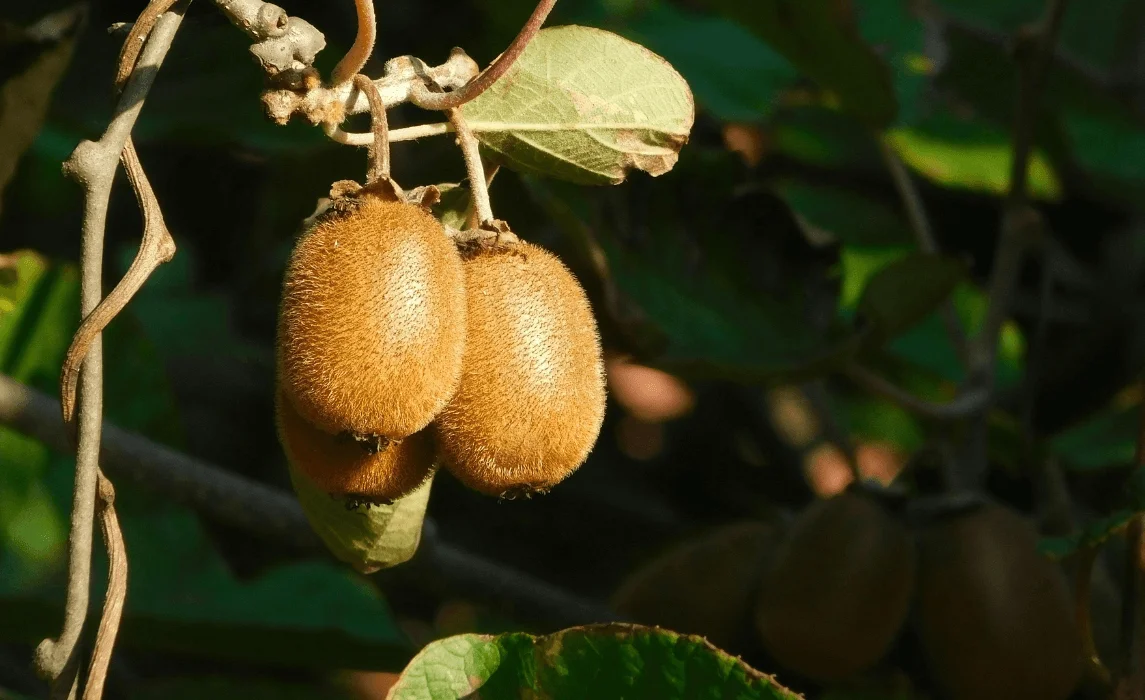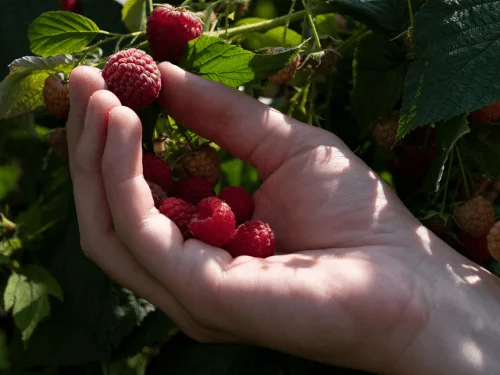Best Types of Fruit Trees to Grow for any Garden

1. Can I grow fruit trees in small gardens or pots?
Yes! Many dwarf fruit trees and container-friendly varieties are perfect for small gardens or patios. Trees in pots can include citrus trees, figs, and dwarf apple trees. Using containers allows you to control soil, water, and temperature more easily, making it possible to grow fruit even in northern climates. These trees are especially useful if you want fast-growing trees that produce fruit within a few years and don’t require a large orchard space.
2. What climate is best for fruit trees?
The climate plays a major role in fruit production. Cold-hardy trees like apples, pears, and plums survive in northern regions, including zone 3, while citrus trees, figs, and peaches thrive in warmer southern areas like Florida or Virginia. Some fruit trees may require protection from frost, while others can tolerate cold winters. Understanding your USDA zone and local conditions ensures your trees will grow healthy and produce fresh fruit consistently.
3. Where can I buy fruit trees online?
Many growers offer fruit trees for sale online, including bare root trees, grafted trees, and container-grown trees. Buying fruit trees online allows you to select from a wide range of fruit tree varieties suitable for your climate, including apples, pears, peaches, plums, citrus trees, and more. When purchasing, check for USDA zone compatibility, tree size, and health guarantees to ensure you receive a quality tree that will thrive in your garden.
1. What is the best way to grow raspberries?
Raspberries grow best when planted in a sunny garden with well-draining soil. You can start by planting bare-root or potted plants in early spring or late fall. Rows of raspberries should be spaced about 2 to 3 feet apart within a row and 8 feet between rows. Using a trellis or support system helps canes grow upright and promotes healthy berry production.
2. How do I plant raspberries?
When planting raspberries, place the crown of the plant 1 or 2 inches above the ground. For bare-root plants, spread the roots in a hole and cover gently with soil. For potted plants, plant at the same depth as they were in the container. Make sure each bush has space to spread so new shoots and suckers can grow without overcrowding. Raspberries are easy to grow, but giving them proper spacing and sunlight ensures your raspberry patch thrives.
3. When do raspberries grow fruit?
Raspberries are perennials, and the first year canes mostly focus on root and cane growth. Summer raspberries (summer-bearing) produce fruit on two-year-old canes, typically in early summer. Fall-bearing raspberries (everbearing) can produce a crop in the fall of the first year, and another in the following summer from the same primocanes. With proper care, a bush can produce fruit in both summer and fall, giving you fresh raspberries for pies, tarts, or eating straight from the garden.
1. Are black-eyed Susans perennials or annuals?
Rudbeckia hirta, the traditional black-eyed Susan, is a biennial or short-lived perennial that often acts like an annual due to self-seeding. Some cultivars like Rudbeckia fulgida are true perennials that return every year.
2. When do black-eyed Susans bloom?
They typically bloom from early summer to early fall, filling your garden with bright yellow petals and dark black eyes. Regular deadheading encourages continuous flowering throughout the season.
3. How do I plant black-eyed Susan seeds?
Scatter Rudbeckia hirta seeds directly on the soil surface and press them lightly, as they need light to germinate. Keep the soil moist, and seedlings will appear within 7–21 days.
4. Can I grow black-eyed Susans indoors or in containers?
Yes. You can grow black-eyed Susans in containers indoors or outdoors. Use a regular seed starting mix, ensure proper drainage, and place them in a sunny location for maximum blooms.
Adding fruit trees to your garden is one of the most rewarding ways to enjoy fresh, homegrown produce while enhancing the beauty and value of your outdoor space. Whether you have a spacious backyard or a small patio, there’s a fruit tree suited to your environment, offering both delicious harvests and a touch of natural charm. In this guide, we’ll explore the best fruit trees to grow and the various types of fruit trees that can thrive in your garden, helping you choose the perfect trees for your needs, climate, and gardening goals. From classic favorites like apples and pears to exotic varieties that add a unique twist, you’ll discover how to cultivate your own fruitful paradise right at home.
10 Best Fruit Trees for Beginners

1. Apple Tree (Malus domestica)
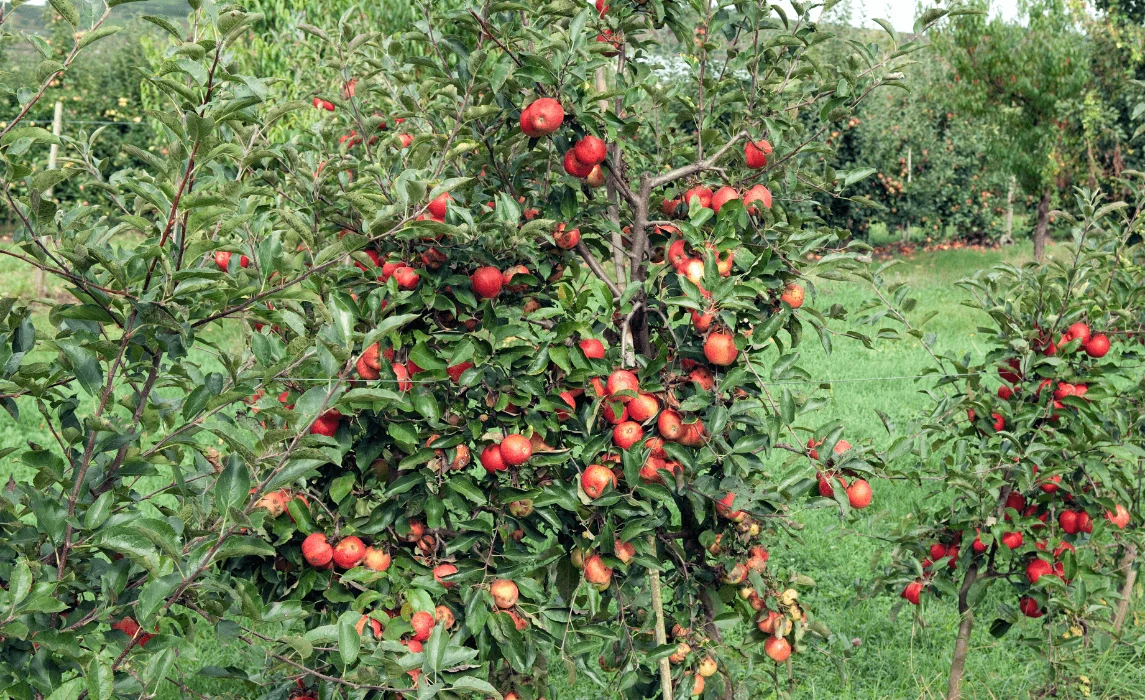
Apple trees are one of the most widely cultivated fruit trees in the world, with origins in Central Asia and a history of domestication spanning thousands of years. They can grow 15–25 feet tall for standard varieties, while dwarf trees remain around 8–10 feet, featuring glossy dark green leaves and producing striking white or pink blossoms in spring that later develop into a range of fruit colors including red, green, and yellow. Apple trees thrive in temperate climates with cold winters that promote dormancy, making them ideal for northern regions and USDA zones 3–8. They require full sun and well-draining soil, with moderate watering and annual pruning to maintain shape, remove dead wood, and encourage strong air circulation for healthier fruit. Cold-hardy and disease-resistant varieties are recommended for beginners to ensure reliable harvests. Apple trees are perfect for gardeners willing to invest a bit of care in a long-term, rewarding fruit-producing tree.
Soil: Well-drained loamy soil
Water: 1–2 inches per week, more during dry spells
Light: Full sun (6–8 hours/day)
Humidity: Moderate; avoid overly humid regions to reduce fungal diseases
Fertilizer: Balanced fertilizer in early spring
Temperature: 32–75°F (0–24°C)
USDA Zone: 3–8
2. Pear Tree (Pyrus communis / Asian Pears)
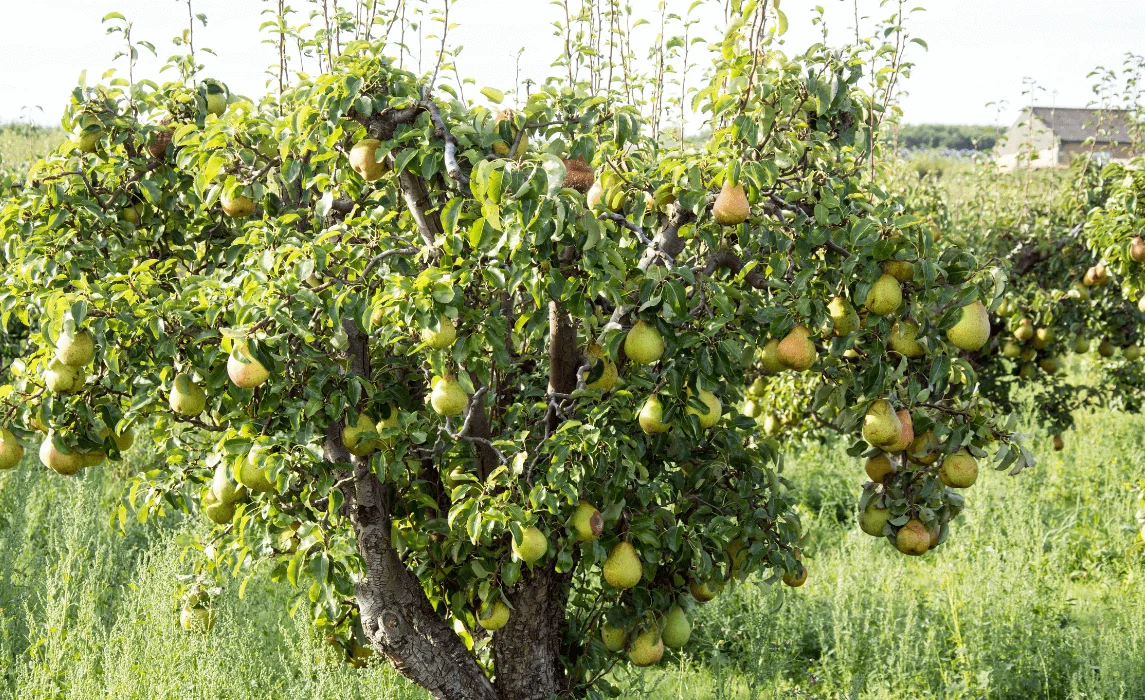
Pear trees have been cultivated for centuries and are known for their crisp, sweet, and refreshing fruit, with European varieties often used for cooking and Asian pears prized for eating fresh. Typically growing 12–20 feet with an upright pyramidal shape, they feature medium green, glossy leaves and produce fragrant white blossoms in spring, followed by fruits ranging from yellow-green to russet-brown. Pear trees thrive in temperate climates, handling northern winters well, and grow best in USDA zones 4–8. They need full sun, well-drained soil, and deep watering during dry spells, with light pruning to maintain shape and remove old branches. Pear trees are resilient and low-maintenance, making them ideal for beginners seeking reliable fruit production without complicated care requirements.
Soil: Loamy, well-drained
Water: Moderate, deep watering weekly
Light: Full sun (6–8 hours/day)
Humidity: Moderate
Fertilizer: Balanced in early spring
Temperature: 32–80°F (0–27°C)
USDA Zone: 4–8
3. Peach Tree (Prunus persica)

Peach trees, originating from China, are beloved for their juicy, sweet fruit and fast-growing nature. They grow 15–25 feet tall, with lance-shaped green leaves and soft pink blossoms in early spring that develop into fuzzy, round fruits in shades of yellow to red. These trees flourish in warmer climates with long growing seasons, such as the southern United States, but cold-hardy varieties can survive moderate frost, suitable for USDA zones 5–9. Peach trees require full sun, well-drained sandy loam, and deep watering during fruit development, along with annual pruning to promote airflow and strong fruiting. Beginner gardeners willing to provide seasonal care and protect blossoms from late frosts will find peach trees highly rewarding for both fruit production and ornamental value.
Soil: Sandy loam, well-drained
Water: Deep, moderate weekly
Light: Full sun (6–8 hours/day)
Humidity: Low to moderate
Fertilizer: Nitrogen-rich for young trees
Temperature: 45–85°F (7–29°C)
USDA Zone: 5–9
4. Plum Tree (Prunus domestica / Prunus salicina)
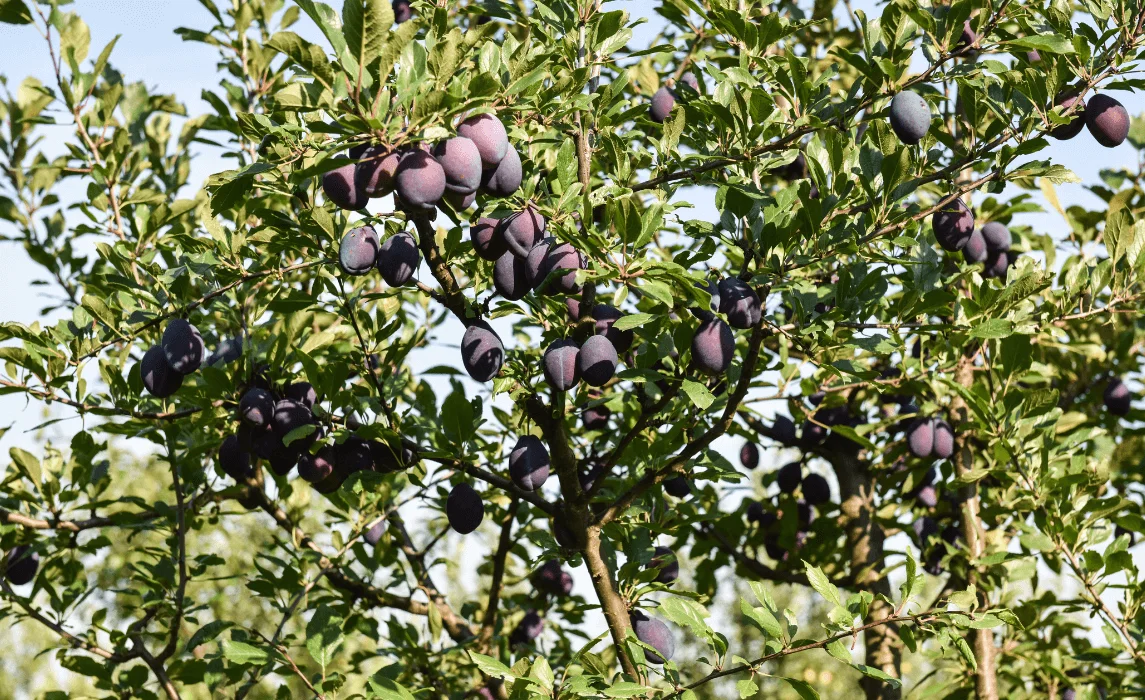
Plum trees, celebrated for their adaptability and low-maintenance nature, produce sweet and tart fruits that are excellent for fresh eating, jams, and preserves. They grow 12–20 feet tall with green oval leaves and bloom with white to pink flowers in early spring, followed by fruit in purple, red, or yellow hues depending on the variety. Plum trees thrive in both northern and southern climates, performing best in USDA zones 4–9, and they prefer full sun and fertile, well-drained soil. Regular watering during dry periods and light pruning after harvest help maintain tree health and maximize fruit yield. Beginner gardeners who desire productive, low-fuss fruit trees will find plums a reliable and rewarding choice for home orchards.
Soil: Well-drained loam
Water: Moderate; consistent moisture during fruiting
Light: Full sun (6–8 hours/day)
Humidity: Moderate
Fertilizer: Balanced in early spring
Temperature: 32–85°F (0–29°C)
USDA Zone: 4–9
5. Cherry Tree (Prunus avium / Prunus cerasus)
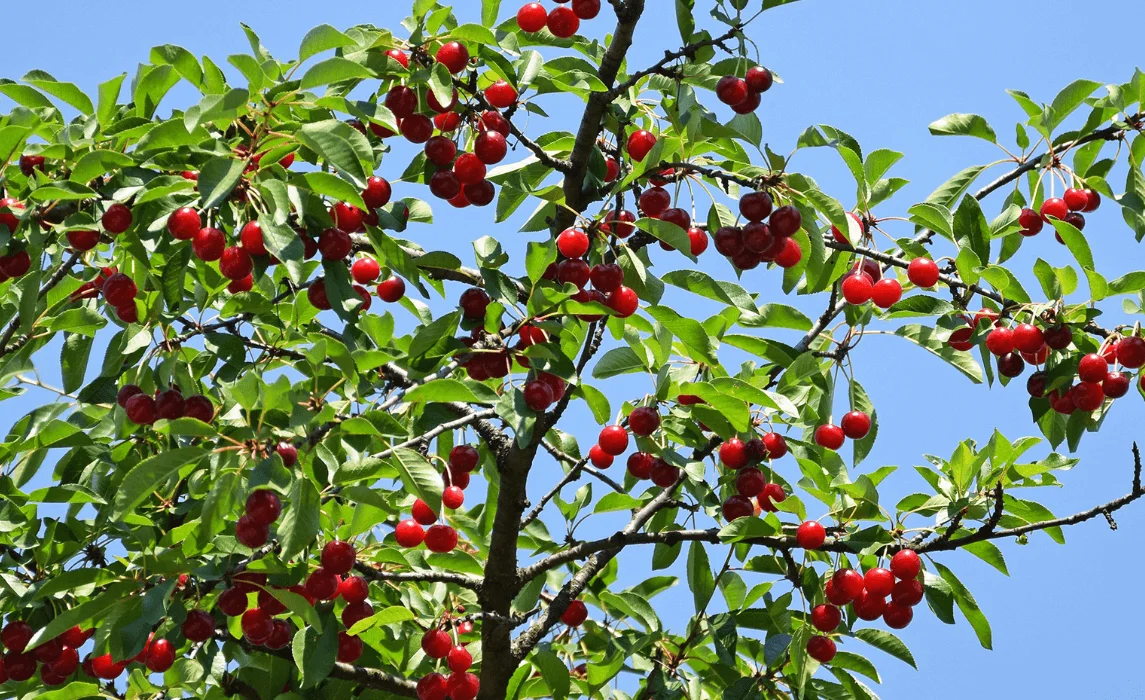
Cherry trees are adored for their ornamental value and sweet or tart fruits, originating in Europe and Asia. They grow 15–30 feet tall with glossy green leaves and produce spectacular white or pink blossoms in spring, followed by vibrant red to deep maroon fruit. These trees thrive in temperate climates with cold winters, with tart cherries being especially hardy, making USDA zones 4–7 ideal. Cherry trees need full sun, well-drained soil, and regular moderate watering, with pruning to improve airflow and prevent disease. Bird protection may be necessary for fruit, but otherwise, cherries are suitable for gardeners who enjoy a combination of visual beauty and delicious harvests, making them ideal for intermediate-level gardeners.
Soil: Well-drained loam
Water: Moderate; more during dry spells
Light: Full sun (6–8 hours/day)
Humidity: Moderate
Fertilizer: Balanced in early spring
Temperature: 32–75°F (0–24°C)
USDA Zone: 4–7
6. Fig Tree (Ficus carica)
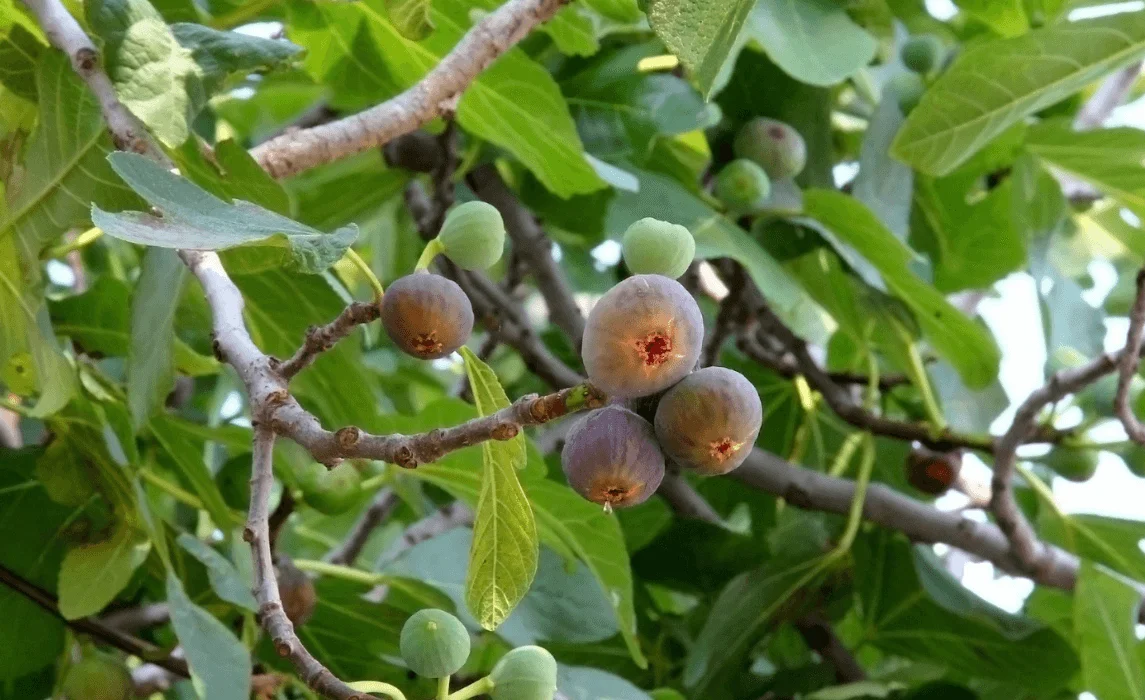
Fig trees, native to the Mediterranean, are among the easiest fruit trees for beginners, producing sweet, soft fruits and providing a striking ornamental presence. They grow 10–30 feet tall, with large, lobed leaves and hidden flowers that ripen into green, purple, or brown fruits depending on the variety. Figs thrive in warm climates but can be grown in pots and brought indoors in colder areas, suitable for USDA zones 7–10. They require full sun, well-draining soil, and moderate watering, with careful protection from frost for younger trees. Fig trees are ideal for beginner gardeners and container gardeners seeking fast-growing, low-maintenance trees that produce delicious, juicy fruit with minimal fuss.
Soil: Well-draining loam
Water: Moderate; do not overwater
Light: Full sun (6–8 hours/day)
Humidity: Low to moderate
Fertilizer: Balanced in spring and summer
Temperature: 60–85°F (16–29°C)
USDA Zone: 7–10
7. Lemon Tree (Citrus limon)

Lemon trees, originally from Asia, are cherished for their fragrant white blossoms and bright yellow fruit that adds zest to cooking and beverages. Dwarf lemon trees grow 6–10 feet tall with glossy green leaves and are ideal for indoor or patio cultivation in USDA zones 9–11, though they can be moved indoors in colder climates. They require full sun, well-draining soil, and consistent moderate watering, with regular fertilization for optimal fruit production. Lemon trees are perfect for beginners and container gardeners seeking a manageable, productive tree that thrives with attentive care and adds both ornamental and edible value to any space.
Soil: Well-draining loam
Water: Moderate, consistent
Light: Full sun (6–8 hours/day)
Humidity: Moderate to high
Fertilizer: Citrus-specific fertilizer
Temperature: 55–85°F (13–29°C)
USDA Zone: 9–11
8. Orange Tree (Citrus sinensis)

Orange trees, native to Southeast Asia, are renowned for their sweet, juicy fruits and fragrant blossoms that fill gardens with a refreshing aroma. Standard trees can reach 20–30 feet tall, while dwarf varieties remain 6–10 feet, featuring glossy, dark green leaves and clusters of white flowers in spring. Orange trees thrive in warm, frost-free climates, ideally USDA zones 9–11, though they can be grown in pots and moved indoors in cooler regions. They require full sun, well-draining soil, and consistent watering to produce abundant, high-quality fruit. Fertilization during spring and summer encourages healthy growth and fruiting. Orange trees are perfect for beginner gardeners and container growers who want to enjoy fresh citrus with moderate care and attention.
Soil: Well-draining loam
Water: Moderate, consistent
Light: Full sun (6–8 hours/day)
Humidity: Moderate to high
Fertilizer: Citrus-specific fertilizer
Temperature: 55–85°F (13–29°C)
USDA Zone: 9–11
9. Apricot Tree (Prunus armeniaca)
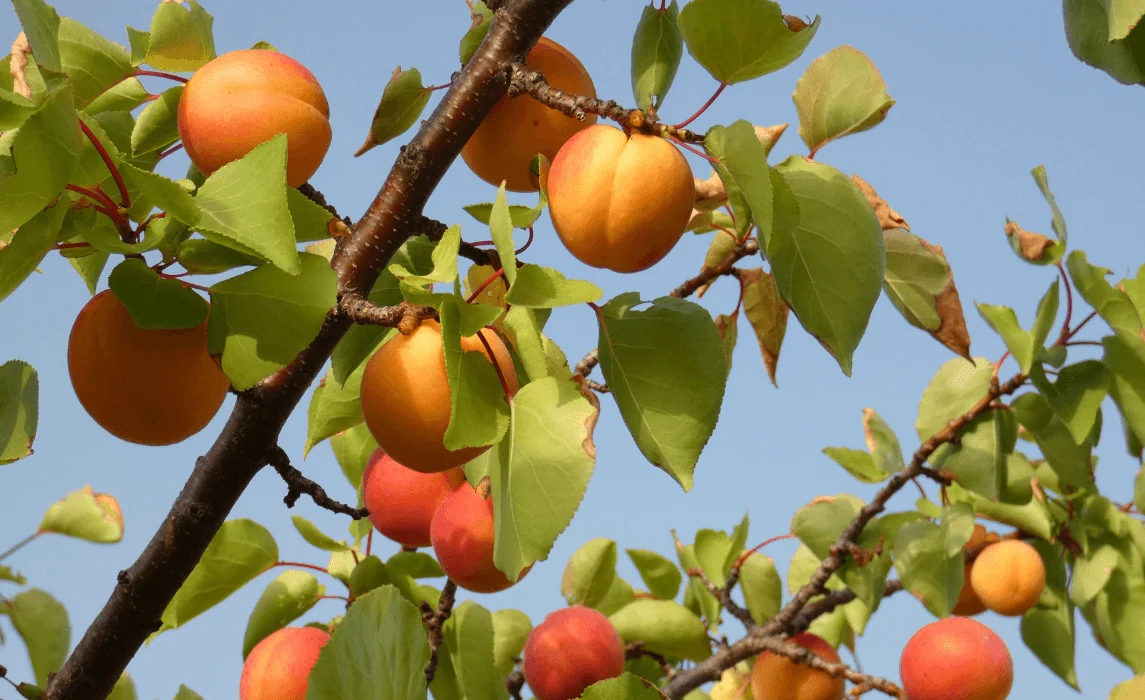
Apricot trees, originating from China and Central Asia, are valued for their sweet, golden-orange fruit and beautiful spring blossoms. They grow 15–20 feet tall with green, oval-shaped leaves and produce pink to white flowers in early spring before fruit development. Apricots thrive in temperate to warm climates with long growing seasons and are suitable for USDA zones 5–8. These trees require full sun, well-drained soil, and moderate watering, particularly during fruit development. Pruning after harvest promotes air circulation and prevents disease. Apricot trees are ideal for gardeners seeking a stone fruit with attractive blossoms and manageable care requirements.
Soil: Well-draining loam
Water: Moderate, deeper during dry periods
Light: Full sun (6–8 hours/day)
Humidity: Low to moderate
Fertilizer: Balanced fertilizer in early spring
Temperature: 32–85°F (0–29°C)
USDA Zone: 5–8
10. Nectarine Tree (Prunus persica var. nucipersica)
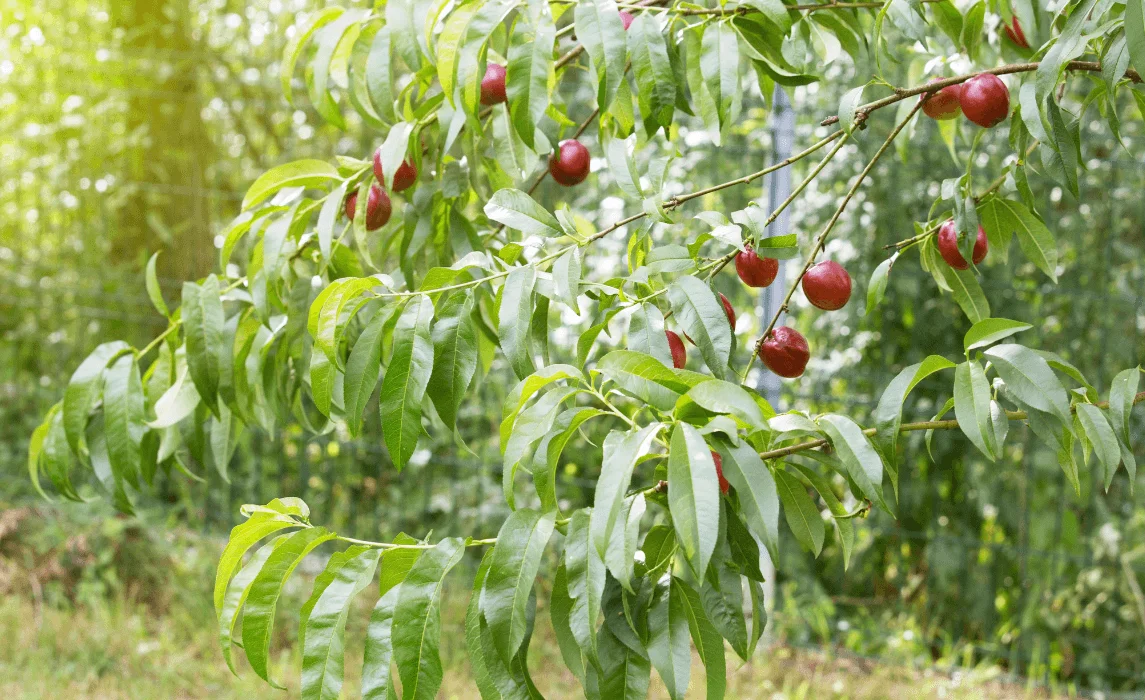
Nectarine trees are closely related to peaches but produce smooth-skinned fruits that are sweet, juicy, and aromatic. They grow 15–25 feet tall, with lance-shaped leaves and delicate pink blossoms in early spring. Nectarines thrive in warmer climates with long growing seasons, suitable for USDA zones 5–9, though some cold-hardy varieties can tolerate northern climates. They require full sun, well-draining sandy soil, and deep, consistent watering during fruit development. Annual pruning encourages airflow and reduces disease risk. Nectarine trees are recommended for gardeners who enjoy fast-growing stone fruits and are ready to provide attentive seasonal care for abundant harvests.
Soil: Sandy loam, well-drained
Water: Deep, moderate weekly
Light: Full sun (6–8 hours/day)
Humidity: Low to moderate
Fertilizer: Nitrogen-rich fertilizer for young trees
Temperature: 45–85°F (7–29°C)
USDA Zone: 5–9
Frequently Asked Questions:
1. Can I grow fruit trees in small gardens or pots?
Yes! Many dwarf fruit trees and container-friendly varieties are perfect for small gardens or patios. Trees in pots can include citrus trees, figs, and dwarf apple trees. Using containers allows you to control soil, water, and temperature more easily, making it possible to grow fruit even in northern climates. These trees are especially useful if you want fast-growing trees that produce fruit within a few years and don’t require a large orchard space.
2. What climate is best for fruit trees?
The climate plays a major role in fruit production. Cold-hardy trees like apples, pears, and plums survive in northern regions, including zone 3, while citrus trees, figs, and peaches thrive in warmer southern areas like Florida or Virginia. Some fruit trees may require protection from frost, while others can tolerate cold winters. Understanding your USDA zone and local conditions ensures your trees will grow healthy and produce fresh fruit consistently.
3. Where can I buy fruit trees online?
Many growers offer fruit trees for sale online, including bare root trees, grafted trees, and container-grown trees. Buying fruit trees online allows you to select from a wide range of fruit tree varieties suitable for your climate, including apples, pears, peaches, plums, citrus trees, and more. When purchasing, check for USDA zone compatibility, tree size, and health guarantees to ensure you receive a quality tree that will thrive in your garden.



